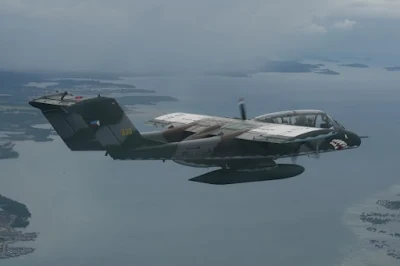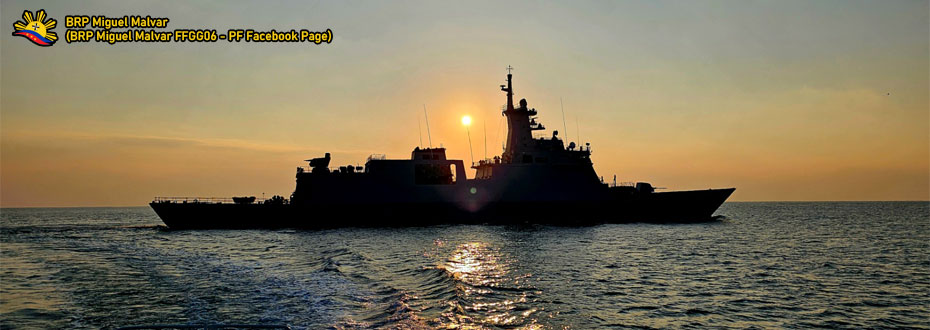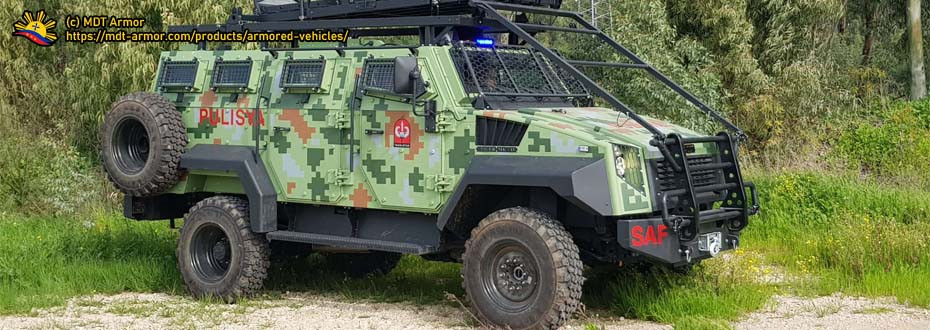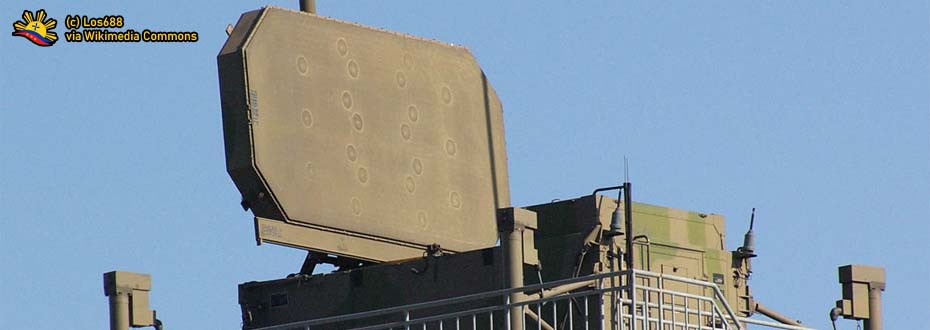The Philippine Air Force is set to have its own new Close Air Support Aircraft which is set to replace its older OV-10 Broncos that this service branch of the Armed Forces of the Philippines currently uses, which sets a precedent for an eventual Modernization of the Air Force's 15th Strike Wing which will be the end-user for these platforms.
These units may help enhance the capabilities that the Philippine Air Force obtains for Close Air Support operations wherein it goes handy with the country's current resolve on its counterinsurgency operations against bad elements that compose of both communist terrorists and their radical Moro equivalents.
Furthermore, the deal regarding this kind of aircraft will come with six units while there may be more prospects for additional assets later along the way where it may serve as the primary or mainstay close air support fix-wing aircraft for the Philippine Air Force to use for many years to come.
Also, this serves as Embraer's first introduction to the Philippines as they managed to get a percentage of the country's defense market in which it will not be surprising for them to get more along the way as procuring more close air support aircraft usually comes at the rationale of getting similar assets, in line with streamlined logistics for maintenance and operations.
With its delivery as of this article's posting still suffers from the delay due to the outbreak of the pandemic which in itself is an understandable thing, let us discuss in the platforms in detail wherein these close air support aircraft are an improvement or enhancement from an older variant of this line of aircraft that was once discussed on this blog website.
RECALLING THE EMB-312 TUCANO
Read more: Knowing the EMB-312 Tucano, written September 2016.
To understand more about the historical aspect of the A-29 Super Tucano Close-Air Support Aircraft that the Philippine Air Force will soon be having in its inventory, kindly check the linked article about its development, particularly to the earlier variant of such types of aircraft made by Brazil's Embraer aircraft namely the EMB-312.
A product made in the 1980s, the EMB-312 Tucano serves as a stepping point for Embraer to enhance this aircraft further into what is now known as the A-29 Super Tucano in which, like any aircraft across time, is integrated with many upgrades that affect its avionics, propulsion, weapons displacement capabilities and others that currently composing this aircraft which will be discussed on its specifications.
Adding up more information regarding this aircraft, it is originally designed as a basic trainer aircraft intended for the Brazilian Air Force's aspiring pilots to enhance their skills especially on experiencing actual flight with its outset having a jet-like experience that will prove useful for the aspirants once they embark on a more realistic aircraft much like what the current KT-1 Woongbi trainer aircraft that the Korean Aerospace Industries (KAI) offer to the Philippine Air Force for such similar project.
With around 500 orders internationally during that time plus 168 orders for the Brazilian Air Force, it can be said that Embraer's marketing of the EMB-312 (or A-27) Tucano is effective in the sense that it helps propel the product further into its current iteration, now being categorized as Close Air Support Aircraft that is helpful for countries like the Philippines to have in augmenting its current platforms in service.
That being said, the EMB-312 Tucano and the orders that it has shows the ideal interest surrounding this aircraft in a manner that it benefits its manufacturer Embraer in the long run, now reaping further benefits in securing multiple customers across the globe especially respective national armed forces that are eyeing the capabilities of this trainer aircraft as well as its younger, close air support cousin.
SPECIFICATIONS
As compared to its EMB-312 Tucano Trainer aircraft predecessor, the A-29 (which also known as the EMB-314 Super Tucano, came with a similar service ceiling of 35,000 feet as designed although the A-29 is heavier at 11,904lb max takeoff weight as compared to its predecessor trainer variant at 7,000lb especially given that it came with an external payload capacity as indicated above that define its close air support capabilities even further.
Also, the A-29 Super Tucano has the maximum level speed of 320 knots which can be equated to around 368 miles per hour (mph) as opposed to the EMB-312 that only has 241 knots or 278 miles per hour (mph; clean at 10,000 ft) which is justifiable as the A-29 is heavier wherein a faster airspeed is required to get its ideal glide ratio.
Regarding its armaments, the A-29 Super Tucano is apparently capable of equipping with both the AIM-9L Sidewinder air-to-air missiles and AGM-65 Maverick air-to-ground missiles which are both available currently with the Philippine Air Force inventory for armaments as well as other precision-guided bombs that the service branch currently obtains. Moreover, it is also ideally equipped with a 12.7mm machine gun on its wings which should be supplied by FN Herstal, a Belgian company which is seen as a current problem as its Wallonia province implements an arms restriction against the country, prompting Embraer to source this subcomponent from other notable sources.
Take note that these Belgian-related arms restriction concerns also cover the Light Tank project wherein both Indonesia's PT Pindad and South Korea's Hanwha offered their respective products - the Harimau Hitam and the K21-105 tanks with turrets made by Belgium's John Cockerill, formerly known as CMI Defence.
Hence, the Belgian concerns prompted Embraer to look for other sources in terms of its machine guns, wherein it remains to be seen to which supplier is willing to fit their machine gun products onboard the A-29 Super Tucanos that the Philippine Air Force ordered in a sense that it subtly creates a different variant of such aircraft for the Philippines which is different from the usual Belgian-equipped ones that Embraer produced.
THE AIRCRAFT IT INTENDS TO REPLACE
 |
The aging OV-10 Bronco of the Philippine Air Force's 15th Strike Wing.
|
This discussion also covers the close air support aspects of the Philippine Air Force which primarily tackles more on its aging fleet of OV-10 Broncos wherein these assets are needed a replacement which eventually comes as newer assets like the A-29 Super Tucanos are on their way.
At its overview, the OV-10 Broncos became the mainstay of the Philippine Air Force's 15th Strike Wing and its Close Air Support Capabilities since the late 1980s as it was intended to replace the AT-28D Trojan which in itself is a close air support/attack derivative of the original T-28 Trojan trainer aircraft and also the one of the most capable aircraft of its time before the replacement.
First developed and produced in the mid-1960s, the OV-10 Bronco is already considered an old design although its performance is still can be seen as relevant especially that it played a role in Close Air Support operations against radical Islamic Insurgents that wreak Marawi City in 2017 which still gives an idea regarding its relevance into the modern spectrum of combat that focuses on counterterrorism operations which are the very thing that the newer A-29 Super Tucano aims to have, playing a similar role with this kind of capability.
In a nutshell, the country's southern archipelagic neighbor Indonesia also possessed OV-10s at one point in time for their close air support capabilities which helps them quell internal unrests in Aceh and West Papua until it was eventually replaced by the newer A-29 Super Tucanos which is definitely the direction that the Philippine Air Force faces as the years come by.
With the Philippines and Indonesia being the primary users of such type of aircraft in the Southeast Asian region, these nations may further benefit on logistics chain as other countries like Colombia, Ecuador, Dominican Republic, and Embraer's mother nation of Brazil also uses the A-29 Super Tucano for their respective close air support needs wherein there will be multiple sources for spare parts that are helpful to keep these flying weaponry operational and in proper order.
TO SUM IT UP
The Philippine Air Force's procurement of A-29 Super Tucanos is just a process of keeping the assets of the 15th Strike Wing up-to-date in the same manner as its regional peers in Southeast Asia do in terms of getting military assets to the current times just like in the case of Indonesia when it replaced its older OV-10 Broncos with this newer, similar aircraft originated from Brazil.
Also, this development may help Embraer extending its marketing reach in the region wherein they cover both the Philippine and Indonesian military markets which later may improve their reputation further shall a future purchase of additional units takes place or the expected after-support help that they may provide as part of the contract that keeps these platforms in the tip-top shape.
Being an improvement over the older EMB-312 Tucano, the A-29 Super Tucano shows that it gets more capable than its designed predecessor that it can perform more than just a trainer aircraft which in this case is being a decent close air support platform that may get its job done just like the older OV-10 Broncos that it has set to replace which is the main premise to why it has been preferred by prospective end-users such as the Philippine Air Force that will form its updated fleet of military aircraft.
As it enters active service to a military branch of the Armed Forces of the Philippines, it is worth seeing its capabilities as things got on the way as its performance may prompt the end-user to consider for more additional assets later on, upon their discretion as the current situation in the country temporarily pushes Modernization plans a bit as the budget has realigned just recently to cope with the pandemic.
Nevertheless, it is still a good thing that such aircraft may still end up being delivered to the Philippine Air Force as these six brand new units are considered as a significant addition to the close air support capabilities of the 15th Strike Wing wherein it may be nicer if more units of such aircraft may get considered along the way.






















